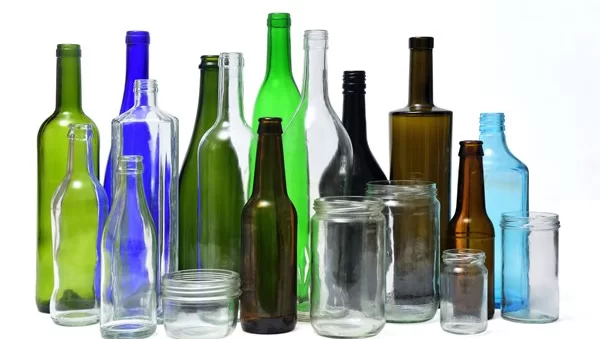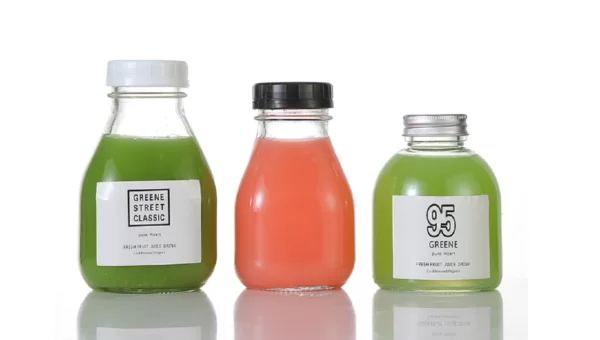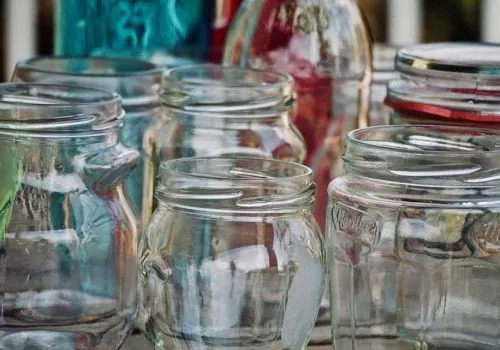At first glance, Glass Jars and glass bottles seem like simple siblings in the world of containers – both transparent, reusable, and often made from the same material. Yet, despite their shared family traits, they serve distinctly different purposes in our kitchens, pantries, and daily lives. The key differences boil down to their shape, opening, and primary function: jars typically feature a wide mouth and a screw-top lid designed for easy access and scooping, making them ideal for storing preserves, spices, or bulk goods. Bottles, conversely, are characterized by a narrow neck (often with a threaded finish or cork) and are purpose-built for pouring liquids. Understanding this fundamental design distinction helps explain why we reach for a jar for jam but a bottle for olive oil.
Mouth Opening
The most noticeable difference between glass jars and glass bottles lies in their openings. This design feature directly impacts how people use them and their overall convenience. Glass jars typically feature a wide mouth, commonly measuring around 2.5 inches (70 mm) for regular jars or up to 3 inches (86 mm) for wide-mouth versions. This generous opening makes it easy to scoop out contents, fill the jar, or clean it thoroughly. Whole fruits, bulk grains, or thick creams slide right in, which is why jars work so well for jams, pickles, pantry staples, or even skincare products. There’s plenty of room to maneuver a spoon or ladle without hassle.
Glass bottles, on the other hand, have a narrow neck, usually under 1 inch (roughly 20–28 mm) in diameter. This design prioritizes controlled pouring—perfect for liquids like juice, soda, oil, or syrup. The smaller opening minimizes spills and helps regulate flow. But it’s not all upside: fitting chunky items inside is tricky, and cleaning that slender neck often requires extra effort.
Usage and Practical Differences
In everyday use, glass jars shine for storing bulky or scoopable goods. Think pickles, preserves, grains, or homemade sauces—their wide openings make filling and emptying straightforward. Bottles, meanwhile, excel with liquids. When you need to drizzle dressing or pour a drink without mess, the narrow neck offers precision.
Cleaning and Maintenance
Thanks to their wide openings, glass jars are a breeze to clean. Most people can easily hand-wash them with a standard brush. Bottles, however, demand more patience. That narrow neck often calls for specialty tools like bottle brushes or even dishwasher cycles to reach every corner.
At a Glance Comparison
| Characteristic | Glass Jar | Glass Bottle |
|---|---|---|
| Mouth Opening | Wide (2.5–3 inches) | Narrow (<1 inch) |
| Best For | Scooping, solids | Controlled pouring |
| Cleaning | Easy by hand | Needs special tools |
| Common Uses | Jams, grains, creams | Beverages, oils, syrups |
The Bottom Line
While both containers share similarities, the opening size ultimately defines their roles. It guides whether you’ll be scooping pickles or pouring oil—and how much effort you’ll spend cleaning up afterward.
Shape and Structure
Glass jars and bottles don’t just serve different purposes—their fundamental shapes set them apart too. This affects what they can hold, how stable they feel, and how practical they are for everyday use.
Glass jars tend to be shorter and broader, often with straight or gently tapered sides. This compact, sturdy build gives them a lower center of gravity, making them harder to knock over. It’s a design that shines for thick, chunky, or solid goods like jams, grains, or beauty creams. A classic mason jar, for instance, stands about 12 cm tall with a generous 7–9 cm opening—plenty of room for scooping bulky items without fuss.
Glass bottles, in contrast, lean taller and slimmer. You’ll recognize this sleek profile in drink bottles, oil containers, or perfume vials. A standard wine bottle, for example, towers around 30 cm high but narrows to a modest 18–22 mm opening. Variations exist—like the curved Boston round or angular French square—but all share that characteristic elongated silhouette. The slender neck isn’t just for looks; it streamlines pouring liquids like dressings or syrups with minimal spills.
Key Design Differences
The gap between jars and bottles boils down to a few smart design choices:
Opening size: Jars boast wide mouths (38–110+ mm) for easy access, while bottles opt for narrower necks (15–38 mm) to control liquid flow.
Proportions: Jars typically have a low height-to-width ratio (about 1:1 or 1.5:1), creating that stable, squat shape. Bottles stretch taller with ratios like 2:1 or 3:1 for a graceful, vertical stance.
Neck design: Jar mouths feature threads for screw-on lids, while bottle necks accommodate corks, caps, or droppers.
How they’re made: Techniques like the Press-and-Blow method help craft jars’ wide mouths and consistent walls, balancing strength with functionality.
Real-World Examples
A mason jar (12 cm tall, 7–9 cm opening) thrives as a pantry staple for pickles or dry goods—its shape makes filling and scooping effortless.
A wine bottle (30 cm tall, 18–22 mm neck) excels at drip-free pouring, securing liquids during serving or storage.
Even tiny perfume vials (sometimes just 10 mm wide) leverage the bottle’s narrow-neck principle for precise, controlled dispensing.
Why Shape Matters
That sturdy, wide-mouthed jar? It’s ideal for users who prioritize easy access and stable storage. The tall, slender bottle? Built for those who value controlled pouring. Ultimately, the shape isn’t random—it’s a direct response to what goes inside and how people interact with it.
Closure and Capping Methods
The way glass jars and bottles get sealed isn’t just about keeping things closed—it’s a carefully chosen feature that impacts freshness, safety, and everyday usability. The right closure matches both the container’s shape and what it’s designed to hold.
Sealing Glass Jars
For jars, you’ll typically encounter a few reliable sealing methods:
Press-on/Twist-off (PT) Closures: Common on preserves or baby food, these steel lids have a plastisol gasket inside. Heat-sealing creates a vacuum as the jar cools, pulling the lid tight for a secure seal. Many feature a safety button or flip panel—if it’s popped up, you know the vacuum’s intact. The threads add extra grip, but it’s the vacuum doing the heavy lifting.
Plastisol-lined Continuous Thread (PLCT) Caps: These screw-on metal caps rely on a soft plastisol liner. Tightening the lid compresses the liner against the jar’s rim, creating an airtight barrier perfect for shelf-stable foods.
Lug Caps: Recognizable by their partial-twist design (common on jam jars), these clever closures lock quickly and resist corrosion. Their dependable seal makes them popular for industrial food packaging.
Pail Lids: Built for heavy-duty use on wide-mouth storage jars, these rugged lids handle repeated opening and closing while protecting bulk contents like grains or powders.
Capping Glass Bottles
Bottle closures prioritize leak-proofing and precise dispensing:
Cork Stoppers: The timeless choice for wine and spirits, sometimes paired with decorative glass stoppers (“shell cork and stopper”) for premium products.
Screw Caps/Threads: Modern bottles (oils, beverages) often use precision-threaded necks (like 410 GPI CT caps) that twist shut cleanly, preserving contents without leaks.
Droppers & Pumps: Essential for cosmetics or medicines, droppers allow controlled application of serums, while pumps dispense creams or liquid soaps mess-free.
Safety Features: Tamper-evident rings (which break on first opening) and child-resistant push-and-turn caps are critical for medicines and certain drinks. Studies show these designs reduce accidental poisonings by up to 25%.
Why Fit Matters
What ties these systems together is the neck finish—the precise design of the container’s opening. Industry standards like GPI/SPI codes ensure closures fit perfectly across manufacturers, preventing leaks and contamination. A mismatched cap won’t seal right, no matter how well it’s designed.
Putting It in Practice
That baby food jar with its PT lid and safety button? It’s engineered for reliable vacuum sealing.The jam jar with lug caps balances easy access with a factory-grade seal.wine bottles might use corks for tradition or screw caps for convenience, while serum bottles rely on droppers for precision.
In short: jars thrive with wide-mouth, reusable seals ideal for food storage, while bottles excel with leak-proof, application-specific closures for liquids and sensitive products—often enhanced by tamper-proofing and safety features.
Intended Use
Choosing between a glass jar and a glass bottle often comes down to what’s going inside it. Their designs cater to distinctly different needs, whether in the kitchen, bathroom, or beyond.
Where Jars Shine
Glass jars naturally lend themselves to storing and preserving solid or semi-solid goods. Think jams, pickles, nut butters, spices, or honey—their wide mouths make scooping, stirring, and accessing contents effortless. This practicality extends beyond food: jars excel at organizing craft supplies like beads, holding DIY candles, or storing bulk pantry staples. Their stability and easy-access design suit products people reach for repeatedly.
Where Bottles Excel
Glass bottles, with their narrow necks and controlled pour, are built for liquids. Beverages like juice, wine, or spirits stay secure inside, while oils, dressings, and syrups dispense cleanly. The design minimizes spills and waste—essential for anything poured rather than scooped. Bottles also protect sensitive contents (like perfumes or medicines) and maintain freshness, especially for carbonated drinks where a tight seal is critical.
Size and Setting
Jars often come in larger capacities, from small sizes up to gallons, making them ideal for bulk storage or frequently accessed goods. Bottles offer more size flexibility, ranging from tiny fragrance vials to standard 750ml wine bottles or liter-sized drink containers. On shelves or countertops, jars sit sturdily with their wide bases, perfect for grab-and-go items like snacks. Bottles feel lighter and more ergonomic to hold during pouring—whether it’s a single-serving drink or a drizzle of cooking oil.
Real-World Pairings
In jars: Peanut butter (easy scooping), face cream (wide access), baking soda (bulk storage).
In bottles: Olive oil (controlled pour), perfume (precision dispensing), cough syrup (secure dosing).
Why Design Follows Function
A jar’s broad shape isn’t accidental—it invites scooping and stacking. A bottle’s slender neck isn’t just stylish; it delivers drip-free pouring. In short: jars prioritize access and capacity, while bottles focus on controlled flow and preservation. Matching the container to its contents isn’t just practical—it’s what each was built for.
Capacity Range
Glass jars and bottles differ significantly in their capacity ranges. Understanding common sizes helps in selecting the right container for any project.
Glass Jar Capacity Range
Glass jars offer a notably wider range of sizes compared to bottles. The smallest jars hold just 1–2 fluid ounces (30–60 ml), ideal for samples, spices, or cosmetics. Mid-sized options like 8 oz (235 ml) and 16 oz (470 ml) jars are popular for jams, sauces, and candles. Larger sizes include 24 oz (710 ml), 32 oz (950 ml or 1 quart), and 64 oz (1.9 liters or half-gallon), recommended for bulk dry goods, salads, or pantry storage. Jars can even extend to several gallons for heavy-duty storage needs.
Labels typically indicate ounces, milliliters, or quarts, sometimes noting microwave safety or canning suitability. For reference, an 8 oz jar resembles a tennis ball in size, while a 32 oz jar is comparable to a large grapefruit.
Glass Bottle Capacity Range
Designed primarily for controlled pouring, bottles feature narrower necks and smaller maximum capacities than jars. Common sizes include 30 ml (1 oz), 120 ml (4 oz), 375 ml (12.7 oz), 500 ml (16.9 oz), 750 ml (25.4 oz), and 1 liter (33.8 oz). Their structure makes them practical for liquids like wine, oils, syrups, or medicines, though beverage bottles rarely exceed 1 liter. A 4 oz bottle holds roughly the same volume as a juice box, while a standard 750 ml wine bottle is universally recognizable.
Quick Comparison
Glass Jars: Versatile containers ranging from 1 oz to several gallons. Used for spices, preserves, dry goods, crafts, and candles.
Glass Bottles: Typically 1 oz to 1 liter. Optimized for pouring beverages, oils, syrups, and liquid medications.
In essence, jars provide expansive storage flexibility, while bottles prioritize precision liquid handling within more compact size ranges.
Reusability and Storage: Glass Jars vs. Glass Bottles
Both glass jars and bottles stand out as environmentally smart choices for home or commercial reuse, though their designs lend themselves to different applications.
Glass Jar Reusability
With their wide openings, glass jars are exceptionally easy to clean—whether by hand, dishwasher, or sterilization methods. This accessibility makes them perfect candidates for repeated reuse in kitchens for jams, grains, or leftovers. Beyond food storage, their versatility shines in crafting (for beads or candle-making) and pantry organization. Many households find themselves repurposing jars constantly, reducing both spending on new containers and overall waste.
Glass Bottle Reusability
Bottles excel at liquid storage and refill systems. Designed for durability, they withstand numerous wash cycles, making them ideal for beverages. Commercial deposit-return programs often reuse bottles 15–50 times before recycling—significantly cutting manufacturing demand. While superb for drinks, their narrow necks and specialized closures (like corks or droppers) limit utility for solids or scoopable contents.
Environmental Impact
Both containers share strong eco-advantages:
- Glass recycling uses up to 95% recycled material without quality loss
- Reusing containers slashes energy consumption versus single-use alternatives
- Properly maintained, either type can serve dozens of reuse cycles before recycling
Practical Considerations
Food producers favor jars for accessible storage of pickles, sauces, and dry goods
Beverage companies leverage bottles’ shipping durability and refill potential
Weight remains a factor: glass is 5–10x heavier than plastic, increasing transport costs—though reuse often offsets this long-term
The Verdict
For versatile home storage (food, crafts, bulk items), jars win with their easy-cleaning design. Bottles dominate liquid applications, especially within refill systems. Both outshine single-use plastics in longevity and sustainability, making them enduring choices for eco-conscious users.





